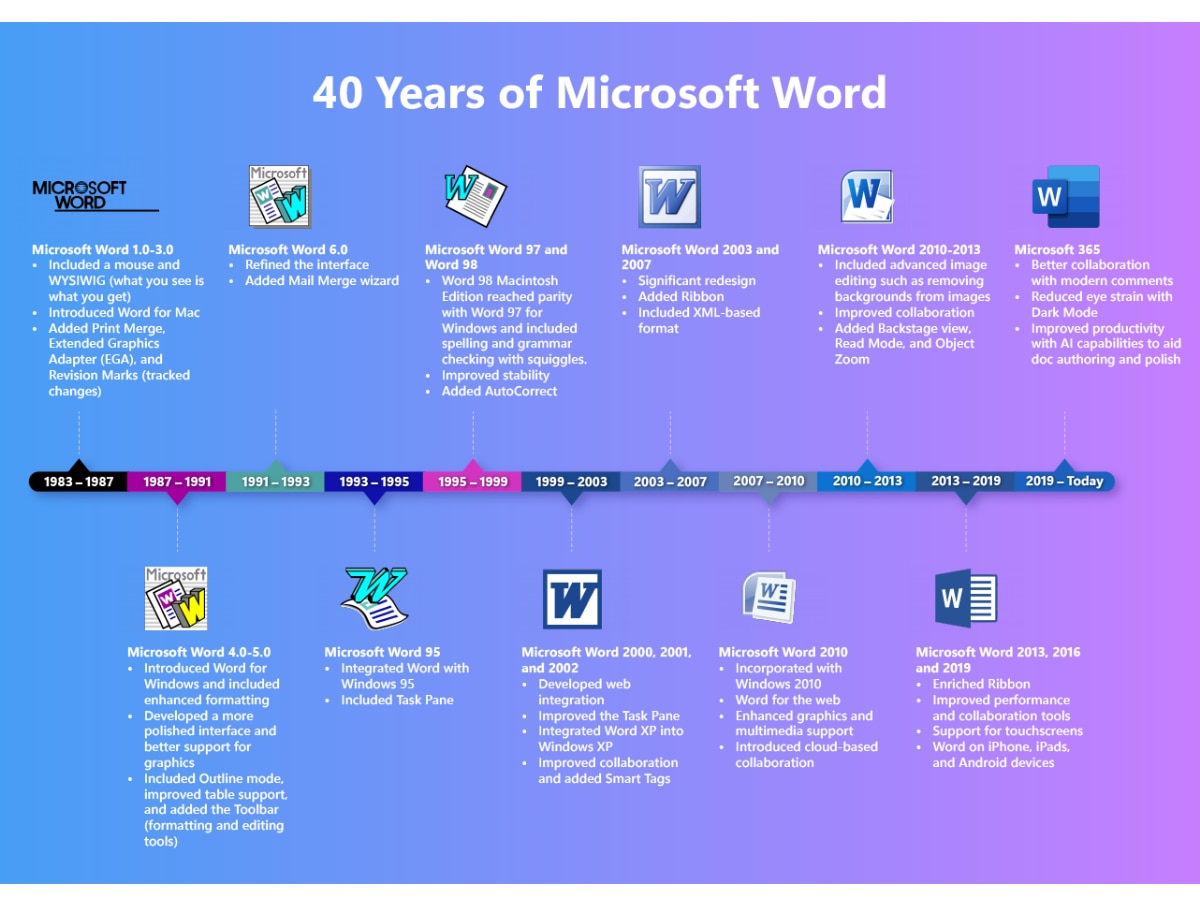Microsoft Shares Plans Ahead For Word As The App Turns 40
Microsoft has revealed its plans for MS Word as the app marks its 40th birthday.

Microsoft Word was unveiled 40 years ago on October 25, 1983 and the app evolved to become one of the most popular Office apps of all times. Now, Microsoft has revealed its plans for MS Word as the app marks its 40th birthday. To recall, after being originally unveiled in 1983, Microsoft Word witnessed a major design overhaul in 2003, got an advanced image editing in Word 2010, better ribbon in Word 2013.
"From its humble beginnings, Word has gone on to become one of the most popular office tools in the world, and pretty much everyone is familiar with it in one way or another. So, to celebrate its 40th birthday, we decided to take a look at how we got here and also share where we’re going," the company wrote in a blog post.
The software giant is continuing to focus on ensuring that Word scales to support users as they complete any writing and reading tasks -- anything from straightforward to complex -- as efficiently as possible. Microsoft has added that it is investing in several areas and it also shared an overview of its plans as follows:
Shepherding in the age of AI
As artificial intelligence (AI) is the buzzword now, Microsoft's AI assistant feature, Copilot would be integrated across devices and platforms, including Word. The company noted that its goal is to continuously iterate on feedback it gets from users, as they create and read content, while leveraging Copilot across platforms and devices.
Write better together
Word has been a popular tool for collaborative content creation since its inception in 1983. Over the years, it has become easier to co-create with others, provide feedback, exchange ideas, and produce quality content throught the app. Microsoft says it is committed to providing a consisted experience and ensuring that Word remains the place to efficiently create, edit, and review content.
Make your words shine with Word for the web
Microsoft is continuing to invest and innovate in Word for the web to make it a better creation and consumption tool. This includes using feedback to prioritize its areas of investment.






































